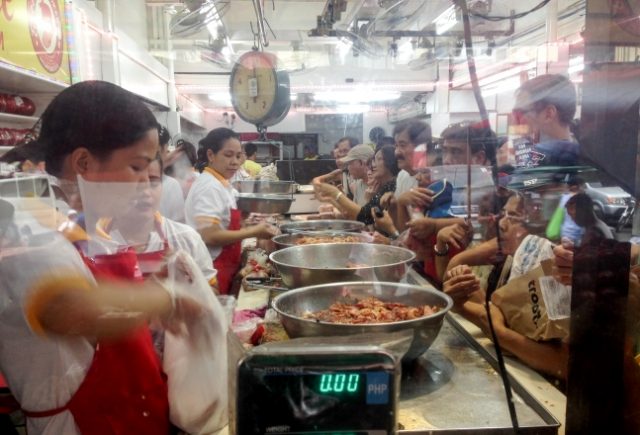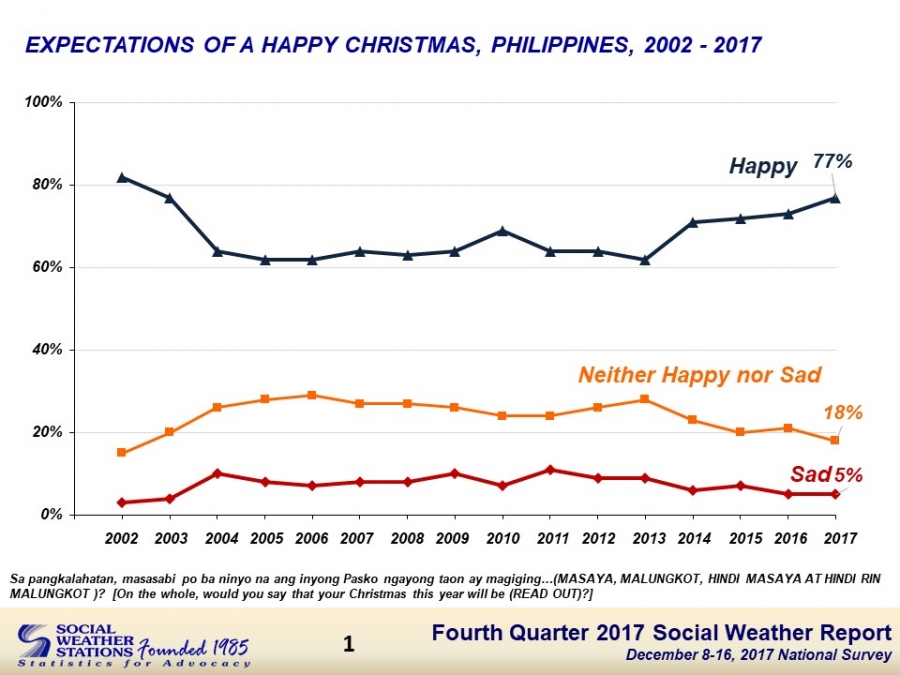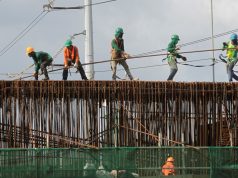
About three in four (77%) of adult Filipinos, statistically, expect a happy Christmas, while 5% expect it to be sad and 18% are neither happy nor sad, according to the Fourth Quarter 2017 Social Weather Survey, fielded on December 8-16, 2017.
The 77% who are expecting a happy Christmas is the highest in 14 years, matching the second-highest 77% who expected a happy Christmas in 2003.
The December 2017 Survey also found four in five (81%) adults saying it is “better to give” gifts this Christmas season, while 19% say it is “better to receive”.
About three in four (77%) of adult Filipinos expect a happy Christmas, while 5% expect it to be sad and 18% are neither happy nor sad, according to the Fourth Quarter 2017 Social Weather Survey, fielded on December 8-16, 2017.
The 77% who are expecting a happy Christmas is the highest since 2003, matching the second-highest 77% who expected a happy Christmas in 2003.
The December 2017 Survey also found four in five (81%) adults saying it is “better to give” gifts this Christmas season, while 19% say it is “better to receive”.
SWS first surveyed people’s expectation of a happy Christmas in 2002, when it scored an all-time high of 82%. It went to 77% in 2003 before settling to 60s levels from 2004 to 2013, ranging from 62% to 69%. It returned to 70s levels in 2014, and has steadily improved since, starting with 71% in 71% in 2014, 72% in 2015, and 73% in 2016, and improving to 77% in 2017.
81% say it is better to give gifts
The 81% in 2017 who say it is “better to give” rather than receive Christmas gifts is the highest-recorded since SWS started asking the question in 2006.
The percentages of those who say it is “better to give” increased to 81% in 2017, up by six points from 75% in 2016.
The sense of giving was 75% in 2006, when the question was first asked, and again in 2014. It slightly improved to 77% in 2015 before slightly declining to 75% in 2016.
Expectation highest in Mindanao, lowest in NCR
Expectations of happy Christmas are still higher in areas outside the National Capital Region (NCR).
In 2017, expectations of happy Christmas is 84% in Mindanao, followed by 80% in Visayas and 75% in Balance Luzon. In 9 out of 16 surveys since 2002, expectations of happy Christmas have been higher in Mindanao than in other areas. By comparison, only 69% in NCR are happy this Christmas.
Compared to 2016, expectations of happy Christmas improved in Mindanao, Visayas and NCR, but hardly changed in Balance Luzon.
Expectations of happy Christmas further improved in Mindanao, up from 78% in 2015 to 84% in 2017, the third-highest after 89% in 2002 and 87% in 2003.
In Visayas, expectations of happy Christmas rebounded to 80% in 2017, after a decline to 74% in 2016 from 77% in 2015.
Higher among Classes D and E
The percentages of those who expect a happy 2016 Christmas are higher among masa class D (78%) and very poor class E (75%) than among middle-to-upper classes ABC (71%).
Among class D, expectations of happy Christmas improved to 78% in 2017, up by five points from 73% in 2016. The 78% in 2017 matches the second-highest recorded 78% in 2003. An all-time high 82% expected a happy Christmas in 2002.
Among class E, expectations of happy Christmas improved in 2017, up by three points to 75% from 72% in both 2015 and 2016. The 75% in 2017 matches the second-highest 75% in 2003. An all-time high 82% expected a happy Christmas in 2002.
By contrast, expectations of a happy Christmas declined among classes ABC in 2017. It went down by 15 points, from all-time high 86% in 2016 to 71% in 2017. Except for two years, expectations of happy Christmas have been usually higher among classes ABC than those from lower classes.
Expectations high across age group
Expectations of a happy Christmas is high across age group.
It is particularly higher among the 18 to 44 year olds – 80% among the youth aged 18-24, 79% among the 25-34 year olds, and 81% among the 35-44 year olds. It is 73% among the 45-54 year olds and 76% among those 55 years old and above.
Except in 2007, 2011, and 2012, the youth are usually happier at Christmas than older adults.
Expectations of happy Christmas among the 18-24 year olds remained at 80% in 2017. Expectations of happy Christmas improved among the 25-35 year olds, up by four points from 75% in 2016 to 79% in 2017. It also improved among the 35-44 year olds, up by nine points from 72% in 2016 to 81% in 2017.
Expectations of happy Christmas hardly changed among the 45-54, moving to 73% in 2017 from 72% in 2016.
Among those 55 years old and above, expectations of a happy Christmas improved by four points in 2017, at 76%, up by four points from 72% in 2016.
Survey ackground
The December 2017 Social Weather Survey was conducted from December 8-16, 2017 using face-to-face interviews of 1,200 adults (18 years old and above) nationwide: 300 each in Metro Manila, Balance Luzon, Visayas, and Mindanao (sampling error margins of ±3% for national percentages, and ±6% each for Metro Manila, Balance Luzon, Visayas, and Mindanao).
The area estimates were weighted by Philippine Statistics Authority medium-population projections for 2017 to obtain the national estimates.
The Social Weather Survey items on happiness and giving on Christmas are non-commissioned. They are included on SWS’s own initiative and released as a public service.
SWS employs its own staff for questionnaire design, sampling, fieldwork, data-processing, and analysis, and does not outsource any of its survey operations.










